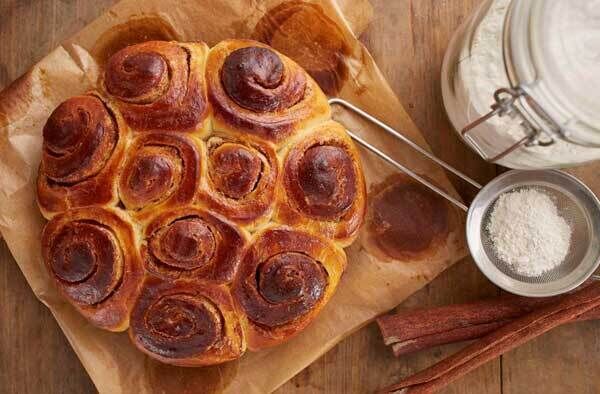Darina Allen shares with us Sarah Cremona's favourite recipe for macaroons

They came from all over the world, 12 nationalities this time.
Some had never held a wooden spoon in their hands before, a few were chefs, others had a little experience in a café or restaurant kitchen, perhaps not even in the kitchen but in front of house or waiting on tables.
All were united by a longing and determination to learn to cook. That’s all we need, passion, energy and curiosity.
Twelve weeks later, they leave us looking forward to their new adventure, going straight into restaurant kitchen either at home or abroad from London to San Francisco to Copenhagen.
They use their newly acquired skills in a myriad of ways — travelling, cooking on yachts, ski chalets in winter, teaching, writing, food trucks, farmers’ markets.
Some will return to their former jobs having taken 12 short weeks off to learn a vital life skill.
One girl wants to be a butcher, others will use their skills to smoke food, make cheese, forage, ferment, even grow herbs and vegetables.

On the summer certificate course which starts in May the students have the opportunity to have a raised bed on the farm, to sow seeds and grow vegetables.
It’s one of many extra circular activities. Several took up the option.
It’s magic to plant seeds at this time of the year, everything grows so fast.
They grew radishes, white turnips, carrots, onions and beetroot from seed and transplanted fennel, cabbage, marigolds, tomatoes, broad beans, lettuce, peas and sunflowers.
On the very first day when they arrived they learned how to sow a seed and then planted a sweet corn plant, tucking a lollipop stick with their name on it into the ground so they can identify their very own plant.
I know of no better way to give my students an understanding of how food is produced and how long it takes to grow and how much care it needs, than to plant it into the ground themselves and then wait for it to grow for a full three months.
Furthermore, it gives them a huge appreciation of those whose labour to grow nourishing wholesome food to keep us healthy and sated plus an understanding of the time and attention it takes.
They will never complain about the price of organic vegetables and herbs again.
Each batch of students enrich our lives in so many ways and often share a favourite recipe with us.
This time Martin, an engineer from Stockholm, designed a brilliant BBQ which our local blacksmith made up.
Much fun was had cooking on it while they were with us and now it will remind us of Martin and the summer 2016 group every time we see it.
Sarah Cremona gave us her favourite recipe for macaroons which I like much more than my original one.
Martin also gave us his favourite recipe for Swedish crispbread, Lindsay spent days testing a recipe for cinnamon buns and then shared the results.

It can often seem intimidating but this very easy version works well and we have written it so that the dough can rise overnight in the fridge and be shaped and baked the following morning.
We always serve them warm from the oven with butter and homemade strawberry jam.
25g (1oz) yeast
50g (2oz) castor sugar
65 ml (2½fl oz) tepid water
4 eggs
450g (1lb) strong white flour
large pinch of salt
225g (8oz) soft butter
Sponge the yeast and sugar in the tepid water in the bowl of an electric mixer.
Allow to stand for five minutes. Add the eggs, flour and salt and mix to a stiff dough with the dough hook.
When the mixture is smooth, beat in the soft butter in small pieces.
Don’t add the next piece of butter until the previous piece has been completely absorbed. This kneading stage should take about half an hour.
The finished dough should have a silky appearance.
It should come away from the sides of the bowl and when you touch the dough it should be damp but not sticky.
Place it in an oiled bowl, cover and rest it overnight in the fridge.
1 x brioche dough (see recipe)
110g (4oz) granulated sugar
110g (4oz) butter, cut into 5mm (¼ inch dice)
Egg Wash
2 x Swiss roll tins – 33 x 20.5cm (12 x 8 inch)
Brush the Swiss roll tins with melted butter. Divide the brioche dough in half.
Roll each into a rectangle to fit the tins.
Egg wash and allow to rise for about one and a half hours.
Heat the oven to 180C/Gas mark 4.
When the dough has risen, dot with the diced butter evenly over the top, sprinkle with granulated sugar.
Cook in the heated oven for 30-40 minutes.
Cool on a wire rack.
Best eaten when freshly baked but also delicious next day.
Brioche (see recipe)
Cinnamon Butter
150g (5oz) butter
250g (9oz) pale brown sugar
1 tbsp Sri Lankan ground cinnamon
1 - 2 beaten eggs
muffin tins
Make the brioche in the usual way. Cover and allow to rise overnight in a fridge.
Next day.
First make the cinnamon butter.
Cream the butter, sugar and cinnamon together and beat until light and fluffy.
Roll out the brioche dough into 1cm (half inch) thick rectangle.
Spread the cinnamon butter evenly over the surface with a palate knife, roll from the long side, cut into 5cm (2in) pieces. Pop each one into a well-buttered muffin tin.
Cover and allow to rise to double in size. Egg wash gently.
Heat the oven to 180C/Gas mark 4.
Bake for 20-25 minutes. Cook on a wire-rack
Dare I say, a foolproof recipe for macaroons — you can of course vary the flavours.

300g ground almonds
300g pure icing sugar
10g cocoa powder
110g egg whites
75g water
300g white sugar
Chocolate Ganache or Buttercream of your choice
Sieve the ground almonds, icing sugar and cocoa powder into a bowl.
Pass the egg whites through a spotlessly clean and dry sieve so that they are the same consistency.
Add the sieved egg whites to the dry ingredients and mix to a smooth paste. Keep aside.
Put the remaining 110g (4oz) clarified egg whites into the a food mixer.
Put the sugar and water into a saucepan, stir to dissolve the sugar and boil until it reaches 118C.
Gently pour the boiling syrup into the the bowl of the mixer. Whisk until light and fluffy to make Italian meringue.
Reduce the speed to medium and continue to whisk until the meringue is less than 35 degrees.
Gently fold the meringue into the almond base.
Line a baking tray with parchment paper. Pipe into generous 2.5cm (1 inch) rounds with a round tip nozzle (size 11). Allow to rest for 10-20 minutes to allow a skin to form.
Meanwhile, heat a fan oven to 150C/gas mark 2.
Bake in the heated oven for 10-12 minutes or until cooked, the macaroons will lift easily off the parchment easily.
Sandwich the macaroons together with chocolate ganache or butter cream of your choice.
You will soon become addicted to this seedy crispbread – delicious with cheese or dips or just to nibble as a snack.
80g (3¼ oz) pumpkin seeds
80g (3¼ oz) sesame seeds
80g (3¼ oz) sunflower seeds
80g (3¼ oz) linseeds
100g (3½ oz) polenta flour or cornmeal
350ml (12fl oz) water
50ml (2fl oz) olive oil
Pre-heat oven to 150C/300F/Gas Mark 2.
Line 2 baking trays with baking paper.
Mix all the dry ingredients in a bowl. Pour in the boiling water and the olive oil. Mix well to dissolve any lumps.
Divide equally and spread out the wet mixture on the baking trays.
Make sure the thickness is even and as thin as possible without creating holes in the mixture. Sprinkle sea salt on top.
Bake in the preheated oven for 70 minutes. Every 15 minutes open the oven door to allow the steam to escape.
After 60 minutes turn the crisp bread over and bake for the remaining 10 minutes.
Allow to cool on a wire rack.
Thinking of starting food business?
So many ideas but nowhere to experiment or test your product? Good news — Cork County Council have a new initiative.
Cork Incubator Kitchens to assist emerging and established food businesses is now available to rent in Carrigaline.
For further details contact Brendan Russell 087-6233088 or Mary Daly 087-919 8168.
Email Brendan@thefoodsafetycompany.ie















